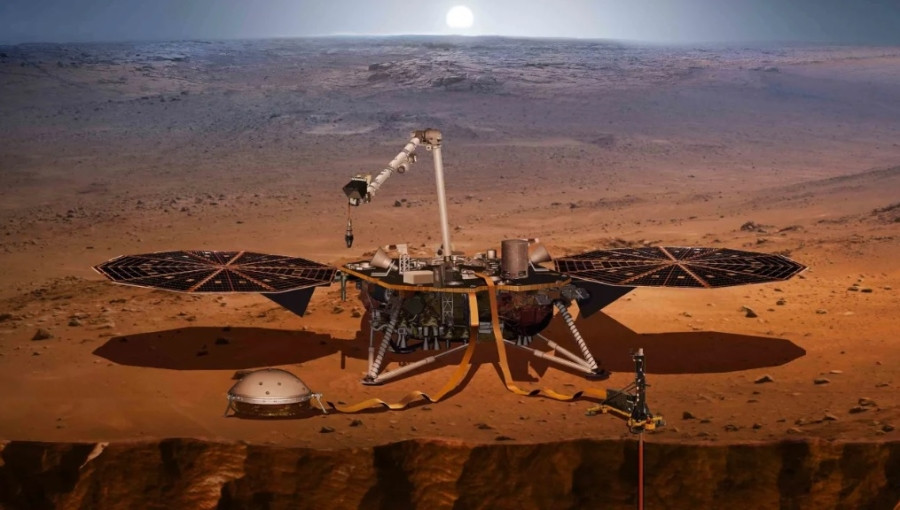Data collected by NASA's InSight lander shows that Mars is rotating faster than before.

Graphic image of the InSight probe. Photo: NASA
According to Reuters, the InSight lander is equipped with a suite of instruments, including antennas and a radio transponder called RISE. These devices will be used to monitor the rotation of Mars during the lander's first 900 days on the planet.
Using the data, astronomers have determined that the Red Planet's rotation is increasing by about 4 milliseconds per year, shortening the length of a Martian day by a thousandth of a second per year. A day on Mars is about 40 minutes longer than a day on Earth.
The acceleration appears to be extremely small. So far, researchers have not determined what is causing Mars’s faster rotation. However, they suspect it could be due to ice accumulating at the poles of Mars or the land mass rising up after being covered by ice. When a planet’s mass shifts in this way, it can cause it to spin faster.
The findings, based on analysis of InSight data shared before the probe ran out of power and shut down, were published in a June research paper in the scientific journal Nature.
The InSight probe, the first mission to study the interior of Mars, was originally supposed to last about two years after landing in November 2018. However, NASA has extended the mission for another two years.
The InSight probe will continue to collect data about Mars until it stops operating completely in December 2022.
The InSight probe is equipped with instruments with advances in radio technology that are a huge improvement over what the Viking landers in the 1970s and Pathfinder in the 1990s had. Upgrades to the Deep Space Network, or giant antennas placed at three strategic points on Earth to relay information from the spacecraft, also improve the accuracy of the data InSight collects and sends back to Earth.
Scientists used the Deep Space Network to transmit signals to RISE on InSight, which then reflected the signals back to Earth. These relayed signals helped researchers track the tiny frequency changes caused by the Doppler shift.
“What we are looking for are variations of just a few tens of centimeters over the course of a Martian year,” said study lead author Sebastien Le Maistre, an investigator at the Royal Observatory of Belgium. “It takes a very long time and a lot of data to accumulate before we can see these variations.”
Previous studies confirmed that Mars has a molten metal core. Researchers then used RISE to measure how Mars wobbled as the core slid around inside it. Watching Mars wobble allowed the team to measure the size of the core. RISE data suggested that the Martian core has a radius of about 1,835 kilometers.
According to Tin Tuc Newspaper